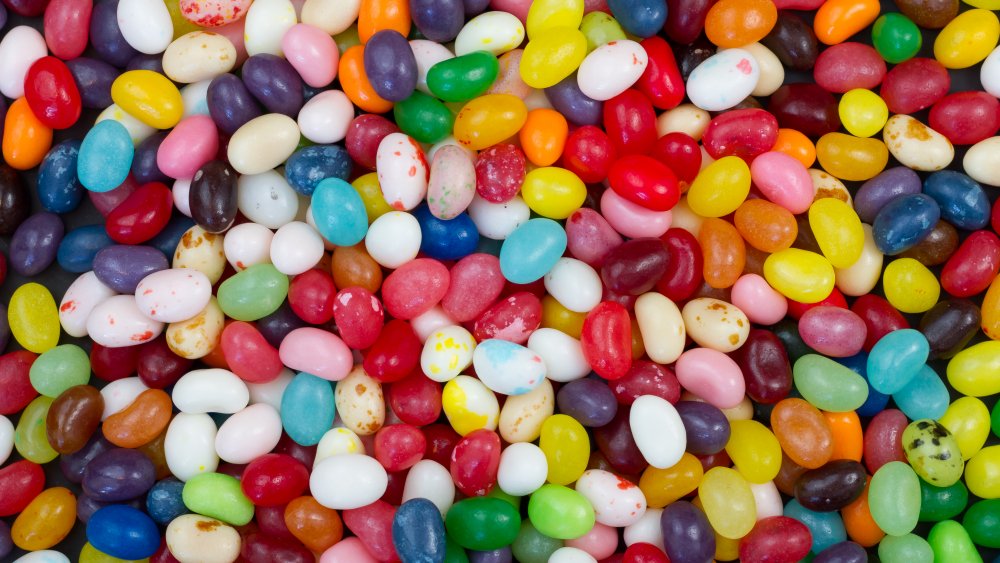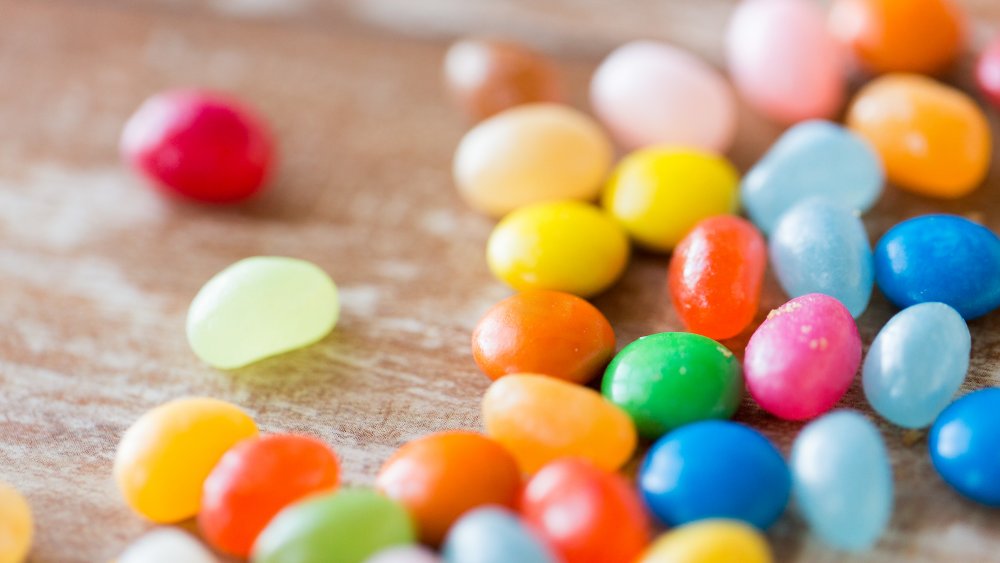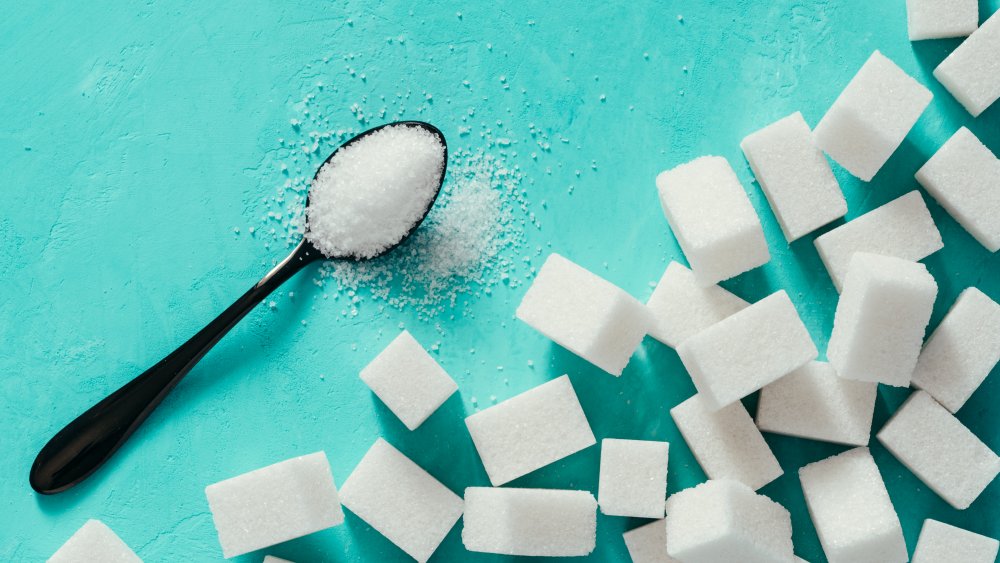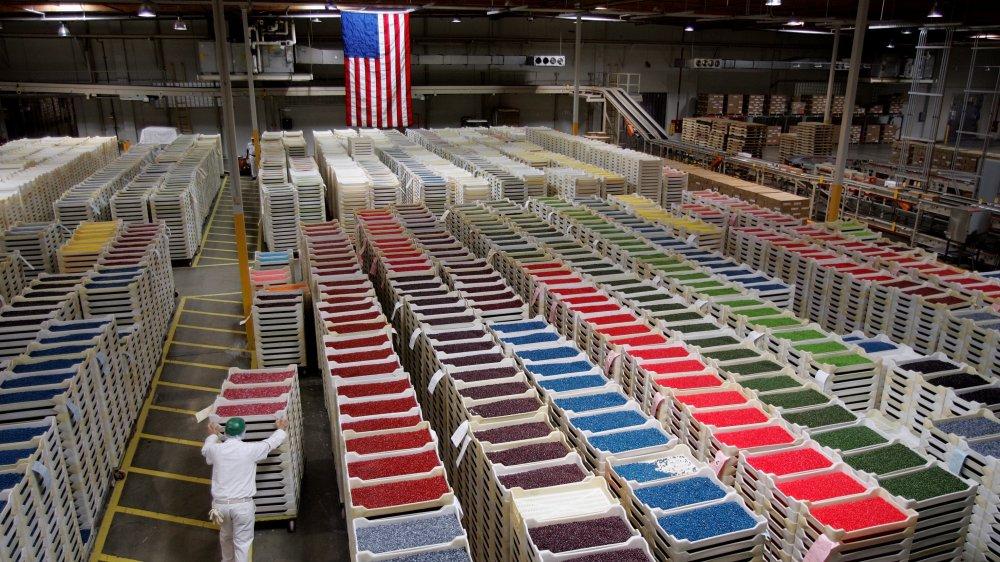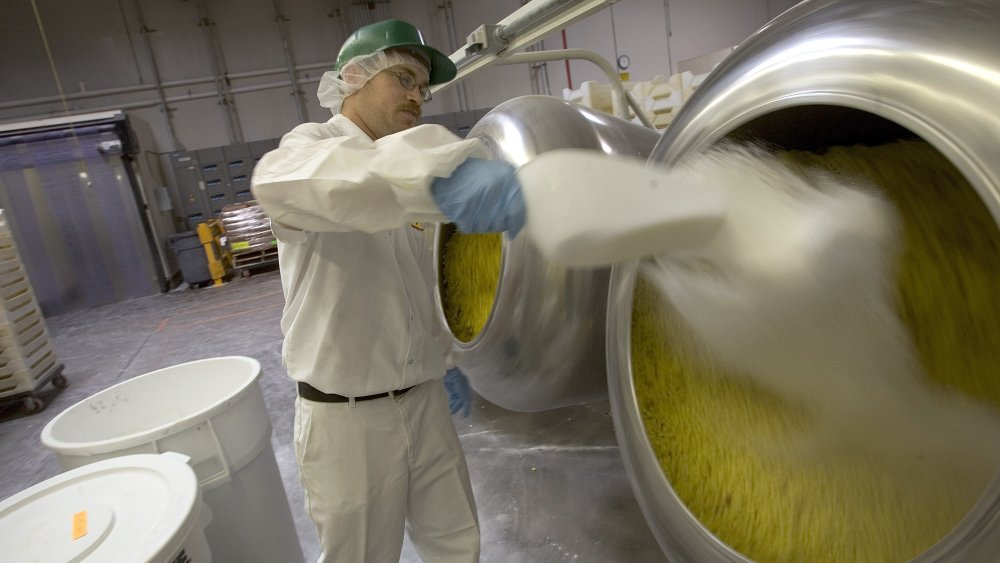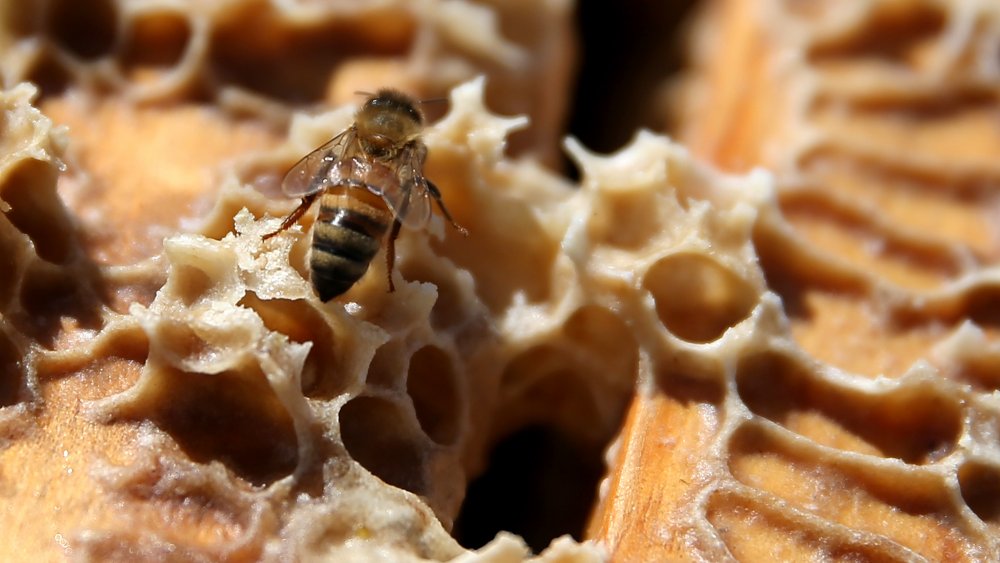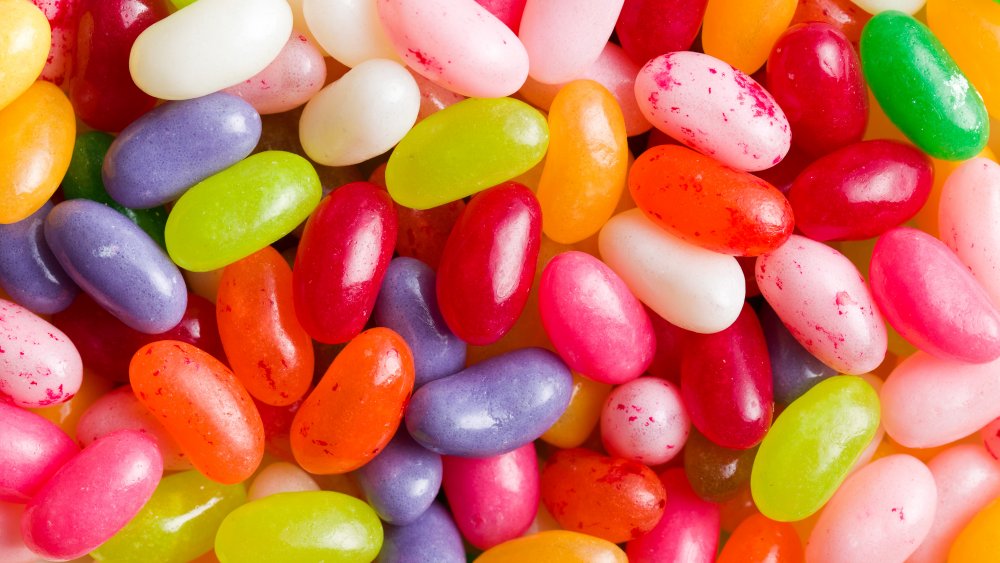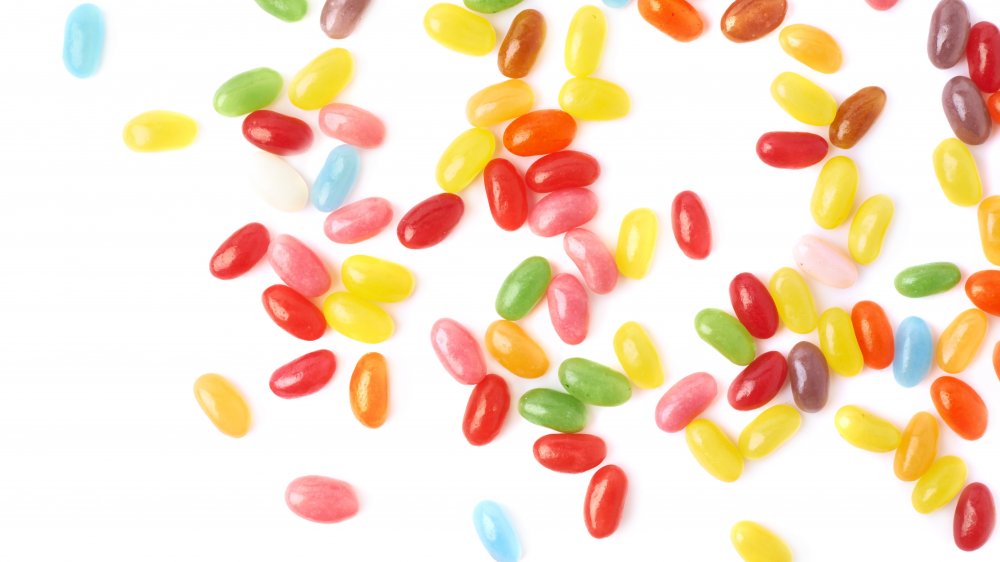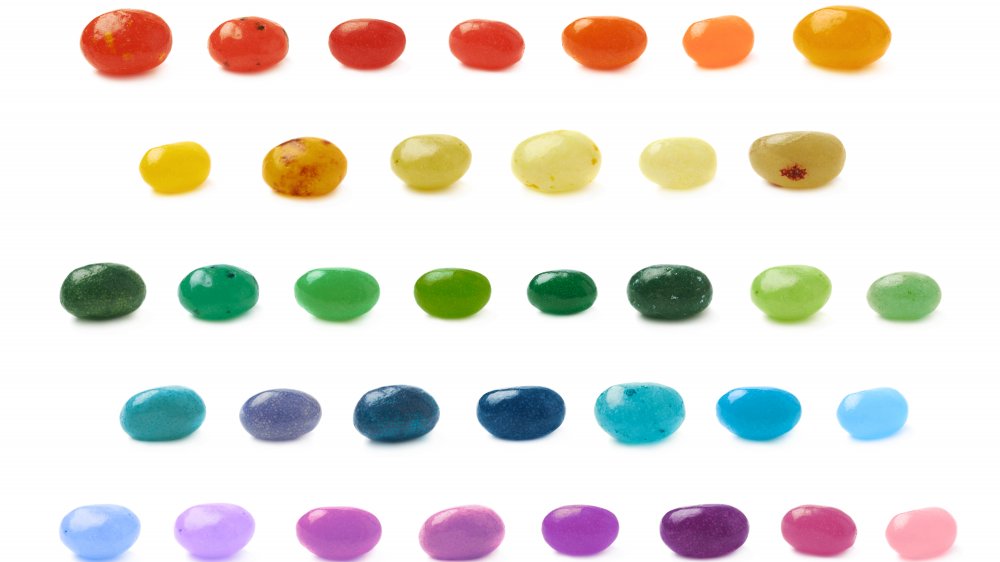This Is How Jelly Beans Are Really Made
There are two types of people in this world. There are those who only eat jelly beans once or twice a year, right when Easter season comes around, and then there are the people who keep them on their desks in little candy dishes all year long, enjoying them by the handful. Jelly beans are one of those candies that you can be absolutely obsessed with, especially with all of their enticing (and some totally disgusting) flavors, or they can be considered completely seasonal, and it's only reasonable to pick up a bag if you're strolling through the Easter candy aisle and you happen upon them.
Either way, jelly beans are an age-old candy staple, and with so many flavors to choose from, there's definitely a favorite flavor out there for everyone. But once you dive a little deeper, you might be surprised to learn the story behind how these little beans are made. Jelly beans are a complicated candy of sorts, with multiple steps to their production process before they're bagged up and make their way to your local store. They may be small, but they're mighty, and we have the scoop. This is how jelly beans are really made.
These are the most common ingredients in jelly beans
Whether you're enjoying jelly beans after finding them during a special Easter egg hunt, picking them off a cake after they were used as a decoration, or, quite literally eating them by the handful at your desk, one thing that can be agreed upon is that those sweet little candy beans are delicious. And we can thank a perfectly balanced mixture of sugar, syrup, and starch for that.
It makes sense that every jelly bean manufacturer would put their own spin on the recipe. Brach's, for example, utilizes sugar, corn syrup, modified food starch, and cornstarch in their beans, paired with flavoring and coloring, of course. And for Jelly Belly, another major producer, its recipe is pretty well the same — they utilize sugar, corn syrup, and modified food starch to prep their jelly bean mixture before introducing their signature artificial flavors and added colors.
The combination those basic ingredients is pretty typical for candy, and it seems fairly simple, but it's the process of making the jelly beans that gives them their final unique shape and texture.
Jelly Beans start with liquid candy
As with the majority of confections, jelly beans start with the introduction of sugar. And while some candies utilize basic granulated or powdered sugar to create the right texture, the process of making jelly beans starts with a liquid sugar base. According to what makers of Jelly Belly jelly beans told Business Insider, the process starts with a concoction called a slurry, which is a liquid mixture of water, cornstarch, sugar, and corn syrup. Once the mixture is ready, the flavoring is added, whether it's made up of fruit juices, purées, or other natural or artificial flavors.
Once the slurry is mixed to perfection, the Jelly Belly mixture travels to a piece of equipment called a mogul, which plays a role in creating the jelly bean shape. The equipment utilizes dry cornstarch to create the mold in trays, which then pass through the mogul, allowing the prepared slurry to be injected into the molds. Once each mold is full, they're put to bed in a heated drying room for the night, allowing the candy inside to begin to set.
Next, jelly beans take a sugar shower
After sitting overnight in the drying room, the jelly beans at Jelly Belly need a wake-up call.
At this point, what comes out of the drying room is the center of the jelly bean, but it needs to be prepped before the candy coating is added. To prevent the delicious jelly bean centers from sticking together, they head to the spa. According to what makers of Jelly Belly jelly beans told Today, the candy molds travel to a steam bath and a sugar shower before heading into a piece of equipment that resembles a cement mixer.
In this next step, confectioners add a perfect ratio of syrup and sugar into the mixer to form the candy's hard coating. As the jelly beans tumble in the machines, and the syrup and sugar start to build up on the gooey center. This coating eventually forms the hardened shell that we bite into while enjoying jelly beans.
Jelly beans are coated in wax
But just how does a jelly bean get its shiny sheen? Well, there's a step for that too. As the little candy beans are tumbling around in the cement mixer-like vessel, developing their outer shell, they're being prepped for their last coating — wax.
It's likely that different jelly bean manufacturers use slightly different processes. For jelly bean manufacturer Brach's, a mixture of confectioner's glaze, carnauba wax, and beeswax makes the perfect final coating — and the same goes for Jelly Belly.
Confectioner's glaze, or shellac, is actually a glaze that's made up of the secretions that insects make after sucking the sap of trees. Typically found in Southeast Asia, it's harvested by crushing the branches that the secretions are found on, washed, and then collected to be utilized in many products to add an exterior coating. Carnauba wax, on the other hand, comes from the leaves of a specific Brazilian palm, where the wax comes from the tree's fronds and is refined to be used. Its melting point is high, and it's pretty well insoluble in water, making it ideal as a coating. Meanwhile, beeswax forms in honeycombs as bees secrete wax, eventually building up to make the honeycomb bees utilize for honey storage.
These pieces of the puzzle are introduced during the tumbling process, working together to create a final coating that makes those little jelly beans shine bright.
Most jelly beans are not made vegan
When it comes to finding candy, or any foods for that matter, that are truly safe for those who opt for a vegan lifestyle, it can be incredibly tough. There are a lot of foods that you would think are vegan, but really aren't — and jelly beans are usually on that list.
While the gooey, inside center of a jelly bean usually follows within vegan guidelines, it's the exterior of most products that removes these candies from the vegan-approved food list. Vegans choose to eliminate dairy, eggs, meat, or any other animal products from their diet.
Since most jelly beans are coated in beeswax, as well as shellac — both animal byproducts — they're not vegan-friendly. But just because some companies utilize those exterior coatings, doesn't mean all do. To make Jolly Rancher jelly beans, for example, the company eliminates the use of confectioner's glaze and beeswax and opts to only utilize carnauba wax, meaning it's a jelly bean option anyone can enjoy.
Jelly beans take days to make
The process of making jelly beans is far more involved than many consumers might imagine. It's hard to imagine a significant amount of time and dedication can go into such a tiny piece of candy, but it certainly does.
In an interview with Today, Jelly Belly's CEO, Lisa Brasher, touched on the subject. "It takes 7 to 10 days to make one bean," she said. "And they have no idea what it actually takes, and what an art form it is to make a jelly bean."
Once the beans are covered in their final coat, the wax mixture, it's not the end of the road for those little jelly beans just yet. According to Business Insider, following that step, they still get inspected and checked for quality, and then they finally make their way to printing and packaging before being shipped to stores.
Jelly beans incorporate a bunch of food dyes
Sure, it'd be nice if eating jelly beans was a healthy habit, and we wish every flavoring and coloring incorporated was natural. But that's definitely not reality.
Jelly Belly, which has around 50 main flavors, boasts just about as many different colors in their beans. And with all those beautiful colors comes a whole lot of food dye. Jelly Belly's assorted pack of 49 flavors, for example, incorporates 10 different artificial color additives to produce the many colors in its rainbow of jelly bean offerings, though they do use some natural coloring ingredients, as well.
When it comes to Brach's, their assorted jelly bean ingredients list includes Red 40, Blue 1, Yellow 5, Yellow 6, and Red 3.
And while all of these food dyes are certainly approved by the FDA, the number of food dyes added to candies for their vibrant colors certainly hasn't come without debate. According to Healthline, researchers have even focused on studying the link between artificial food dyes and hyperactivity in children, as well as sleeplessness, irritability, and even cancer. In the U.S., the FDA continues to stand by the safety of food dyes, but in the UK, a warning is now required on the label for any food utilizing an artificial dye.
Coming up with new jelly bean flavors takes a lot of steps
Opening up a bag of jelly beans is like diving into a whole world of possibilities. And for a candy that first started to really gain traction with gourmet flavors in 1976, they've certainly come a long way. Really, from buttered popcorn to pear to grape and even literal dirt flavored, there's a jelly bean flavor out there for anyone, from more than one brand. But coming up with those flavors takes a lot of time and effort. According to Business Insider, each flavor of jelly bean has its own recipe to abide by, and when it comes to Jelly Belly, the company likes to make their jelly beans taste just like the real thing the flavor is mimicking — and that takes a lot of trial and error.
A spokesperson for Jelly Belly told Mental Floss that developing a new flavor starts with looking at the real thing in a gas chromatograph, which creates vapors to analyze the chemical makeup of those scents to convert them into flavors. After the flavor is created based on scent, it goes through multiple taste tests before getting the stamp of approval for production and beginning the long process of making it into a jelly bean.
